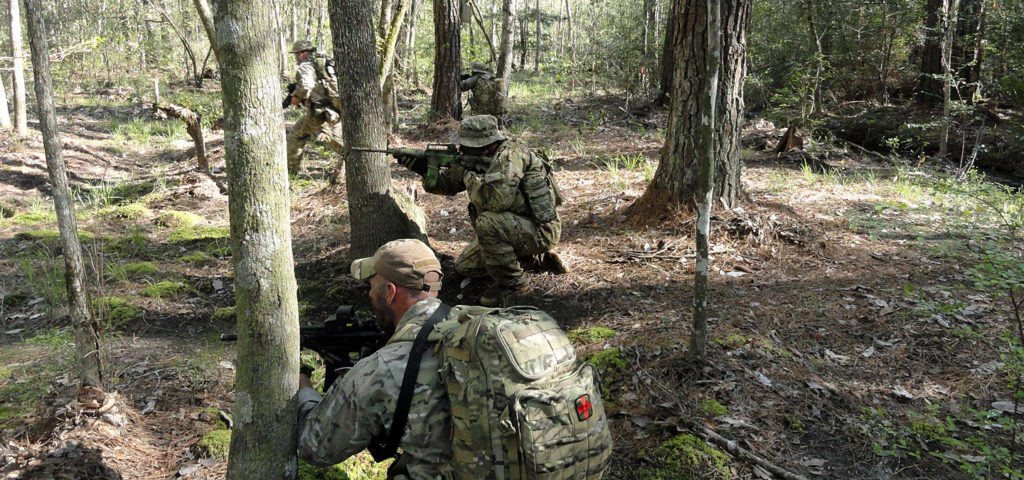Our world isn’t as safe as it once was. Thirty five to forty years ago, our nation’s society was in different place than it is today. Our world is more complex than at any other time in our nation’s history. The threats that an average citizen faces today can range from small time criminal threats, violent political dissent, violent mass shootings, assassinations of public servants, to domestic and international terrorist threats here at home.
At no other time in our nation’s history have citizens had to be more prepared for such a wide range of threats that threaten their safety. A new president will not make this threat go away overnight.
Being Prepared
Since 9-11, many in the civilian and Law Enforcement community have chosen to seek out professional private tactical training to be better prepared for a threat that’s broad and all encompassing. However, are you training properly? Have you evaluated your training and is your training diverse enough?
Are you truly prepared to be the first responder to a threat to defend yourself, your family and your community? Are you prepared and truly technically and tactically proficient?
Technical proficiency is knowing your equipment and being able to operate it efficiently and effectively. You need to know how your equipment works, how to employ it, how to maintain it and even how to modify it if necessary. When acquiring new equipment, you need to find out how it works, learn how to use it and understand your equipment’s strengths and weaknesses.
As a warrior, you need to know what value the equipment has for your operation and how to employ each item effectively. To become technically proficient, it takes endless study. Manuals and publications, as well as many hours of hands on instruction are needed to attain this proficiency.
Tactical proficiency (tactics and fieldcraft) is knowing how to employ all assets to include personnel and equipment in a tactical manner based on the situation and terrain to survive.
Tactics is defined as the art and science of employing all available means to maneuver and win in combat. In other words, tactics are the activities and skills used to organize, plan and maneuver to achieve a specific objective. The science of tactics encompasses capabilities, techniques and procedures.
The art of tactics includes the creative thought process and the flexibility to employ all means necessary to accomplish the assigned mission. All while making sound timely decisions when faced with an intelligent enemy and limiting the hazardous effects of the battle to sustain yourself and others during combat.
It’s essential to master both the science and the art of tactics to exploit your strengths, the terrain and the situation to defeat an unpredictable enemy.
Also keep in mind that tactics and strategy are two different terms that are often confused. Tactics are the actual means used to achieve an objective, while strategy is the art of devising and employing plans that lead to execution.
Fieldcraft
Fieldcraft consists of the skills you need to sustain yourself and survive during combat conditions in the field. Proficiency in fieldcraft reduces the likelihood that you and others will become casualties. The requirement to be able to do one’s job in a field environment, distinguishes the professional from the amateur.
Fieldcraft skills are ones all warriors must master to operate effectively in any environment. Some of these skills include camouflage, cover and concealment, stealth in movement, day and night navigation, exploitation of terrain, crossing obstacles, selecting good firing positions, detecting direction of enemy-fire and ranging, observation techniques.
All of this in addition to employing survival, evasion and escape techniques.
Good fieldcraft skills are essential to survivability. You gain proficiency in fieldcraft through formal training, study and practice. Once learned, few fieldcraft skills are difficult maintain.
Today’s over reliance on technology has made tactical conditions more complex than in the past. Batteries and electronics may fail, but do you possess the human advantage? This includes your skill and ability to perform without all the technological enablers that may become disablers without them.
Things to Remember
- Humans are more important than hardware.
- Quality training is better than quantity.
- Know your strengths and weaknesses and seek self-improvement.
- Develop individual discipline, courage, personal initiative and always think creatively.
- Be decisive.
- Never become complacent with your training, like many are.
- There will always be training distractors, overcome them.
- Know the many threats you might encounter.
Never be afraid to ask questions or seek additional training to help you learn. If your technical and tactical knowledge is inadequate, admit it and take measures to correct your shortcomings. “Winging” your way through a situation will only result in damaging your personal credibility and could quite possibly result in the injury or death of you or someone else.
Technical and tactical proficiency will not occur after an incident occurs, so be proactive rather than reactive. All too often people find themselves untrained, ill-equipped and out of shape, so don’t be a statistic. Train hard and seek training that pushes you mentally and physically.
Editor-in-Chief’s Note: John Hurth is a retired U.S. Army Special Forces Soldier who served with 1st Special Forces Group at Ft. Lewis, WA where he participated in multiple deployments overseas to include two combat tours in support of the Global War On Terror. He now uses his years of tracking knowledge as the owner and lead instructor of the TÝR Group where he and his staff conduct training on various tracking techniques.
